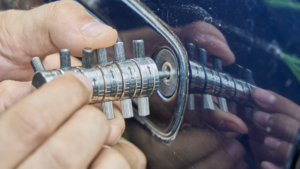Closed-Circuit Television (CCTV) systems have ingrained themselves as a fundamental component of contemporary security protocols. Regardless of being employed for residential or commercial purposes, these systems provide a dependable means to oversee and protect properties. To guarantee the proficient and optimal operation of your CCTV system, take into account the ensuing suggestions:
Strategic Camera Configuration: Proper camera configuration is essential for capturing clear and comprehensive footage. Identify important areas to monitor, such as entry points, high-traffic zones, and vulnerable spots. Ensure cameras are positioned at appropriate heights and angles to minimize blind spots.
Address All Sights: Select cameras equipped with wide-angle lenses or pan-and-tilt capabilities to cover vast spaces. This reduces the camera count while upholding thorough surveillance.
Weather Reliability: For outdoor camera installation, go for weather-resistant models designed to withstand various weather conditions. This reliability ensures continuous surveillance, regardless of the environment.
Optimal Camera Investment: Invest judiciously in optimal cameras with high resolution to capture images of superior clarity and finer details. These cameras also demonstrate exceptional performance in low-light conditions, ensuring uninterrupted surveillance efficacy.
On-the-Go Monitoring: Select a CCTV system that grants remote access through a smartphone app or web browser. This functionality empowers you to monitor your property in real-time from any place, boosting convenience and security.
Adequate Illumination: Effective lighting is essential for capturing distinct images, especially at night. Consider placing cameras near current light sources or utilizing cameras with infrared (IR) sensors for enhanced night vision.
Ongoing Care: Continuously care for your CCTV system by performing regular maintenance, confirming cameras are clean, accurately aligned, and functioning as expected. Dust or debris on the lens can impact image quality.
Proper Data Space: Ensure your CCTV system has the proper data space to store recorded footage. Depending on your requirements, consider cloud storage or an on-site digital video recorder (DVR) or network video recorder (NVR).
Privacy Consciousness: Exercise consciousness of privacy laws and regulations during camera installation, especially in areas that could potentially breach others’ privacy.
Protected Network Setup: If your CCTV system is connected to the internet, safeguard it with secure passwords and activate encryption. Regularly update firmware to prevent vulnerabilities.
Motion Detection: Make use of motion detection configurations to initiate recording and notifications when motion is detected. This preserves storage room and directs your focus to potentially significant occurrences.
Integrated Safety Solution: Integrate your CCTV system with other security measures, like alarms or access control systems, to form a holistic security solution.
Privacy Preferences: When your cameras oversee spaces with a combination of public and private places, apply privacy settings to mask private areas from view.
Consistent Upgrades: Ensure your CCTV system stays current by installing the latest firmware and software updates provided by the manufacturer.
User Skill Development: If several people will use the CCTV system, provide training to develop their skills in operating it.
Complying with Regulations: Educate yourself about local legal stipulations and directives regarding the operation of CCTV systems, especially in public spots.
Footage Analysis: Routinely examine recorded footage to identify any out-of-the-ordinary or suspicious activities. This approach reinforces security measures.
Emergency Power Backup: Contemplate furnishing backup power to your CCTV system, such as uninterruptible power supply (UPS) units. This helps in ensuring uninterrupted surveillance during power failures.
Ongoing Verification: Continue to verify your CCTV system to confirm the operational status of all cameras and the accurate recording and storage of footage.
Skilled Configuration: Despite the availability of DIY alternatives, professional installation ensures precise camera placement, wiring, and setup for optimal performance.
Through the application of these recommendations, you can secure the enduring strength and efficacy of your CCTV system in enhancing security, whether it’s for your home, office, or other premises. Remember that technology is constantly progressing, so maintaining awareness of the latest developments in CCTV systems can further fortify your security measures.





